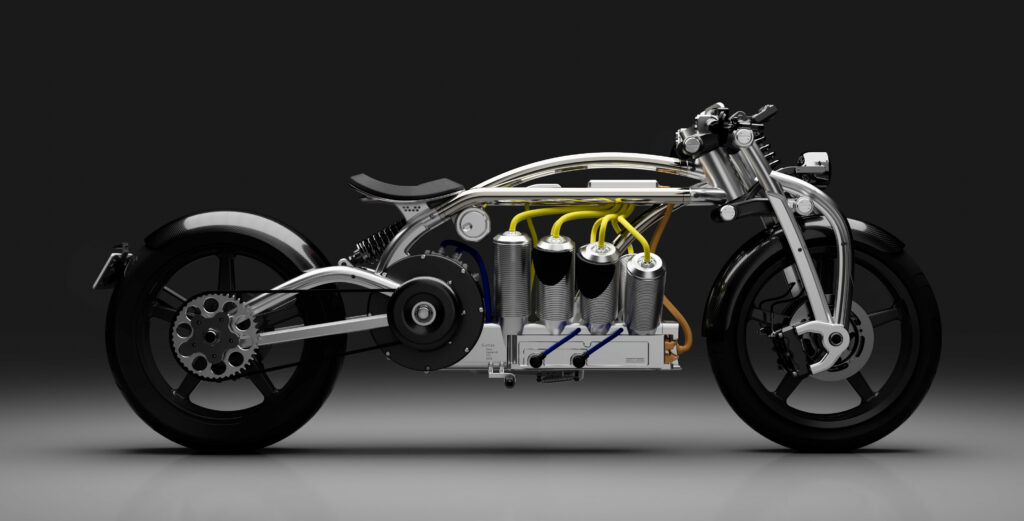Bike battery spreads the load

Curtiss Motorcyles in the US has replicated a V8 engine with a distributed battery pack to provide higher efficiency for its latest Zeus model (writes Nick Flaherty).
The Zeus has a skeletal space frame anchored to the custom powertrain architecture. “With the battery cells packaged inside eight cylindrical towers configured in a flaring radial vee pattern, we’re able to achieve maximum battery cooling efficiency,” said Jordan Cornille, designer at Curtiss.
The eight battery packs store a total of 16.8 kWh, which flows at 399 V through a proprietary controller linked to a PM100 Propulsion Inverter from Cascadia Motion. This drives a P400 axial motor co-developed with YASA, of the UK.
This gives a power output of 217 bhp (160 kW) and 147 lb-ft (200 Nm) of torque. Acceleration is expected to be 0-60 mph in 2.1 s and the bike’s range is quoted as 280 miles.
Manufacturing partner Fast Radius has already produced more than 60 components for Curtiss for the bike at more than 95% yield.
The Zeus also has aluminium girder front suspension and a hand-welded titanium/chromoly tubular chassis. The suspension is a double-wishbone parallelogram fork with machined 6061 aluminium girders and direct-action RaceTech monoshock, fully adjustable for high- and low-speed compression and re-bound damping with 6 in of travel.
The front brakes are four 230 mm Beringer floating aeronal cast iron discs with four-piston Beringer radially mounted Aerotec calipers; the wheel is a carbon fibre 110/80 R18 BST. The rear suspension is a machined 6061 aluminium swingarm with centreline RaceTech monoshock, offering two-speed compression and rebound damping, with 6 in of travel.
The rear brakes are two 230 mm Beringer floating aeronal cast iron discs with four-piston Beringer radially mounted Aerotec calipers on a 160/60 R18 BST carbon fibre wheel.
The Zeus is expected to be available next year.
ONLINE PARTNERS































